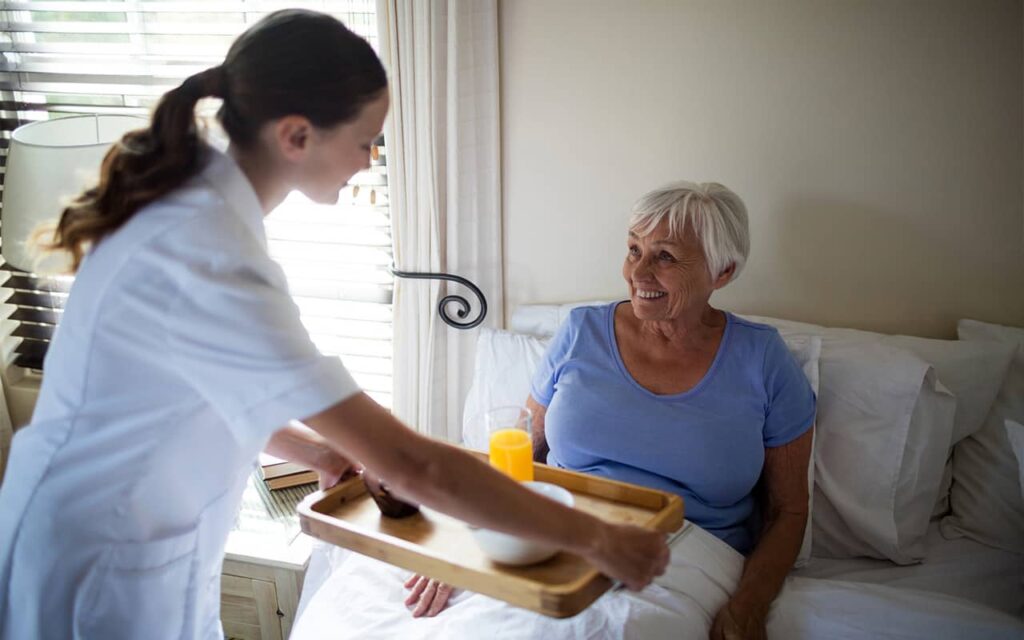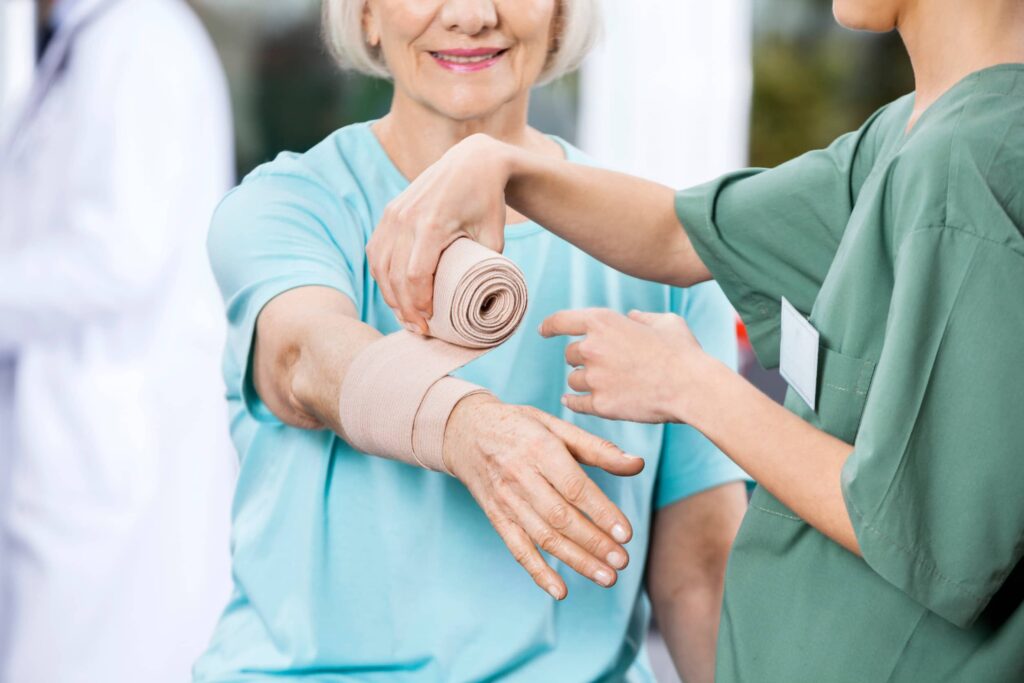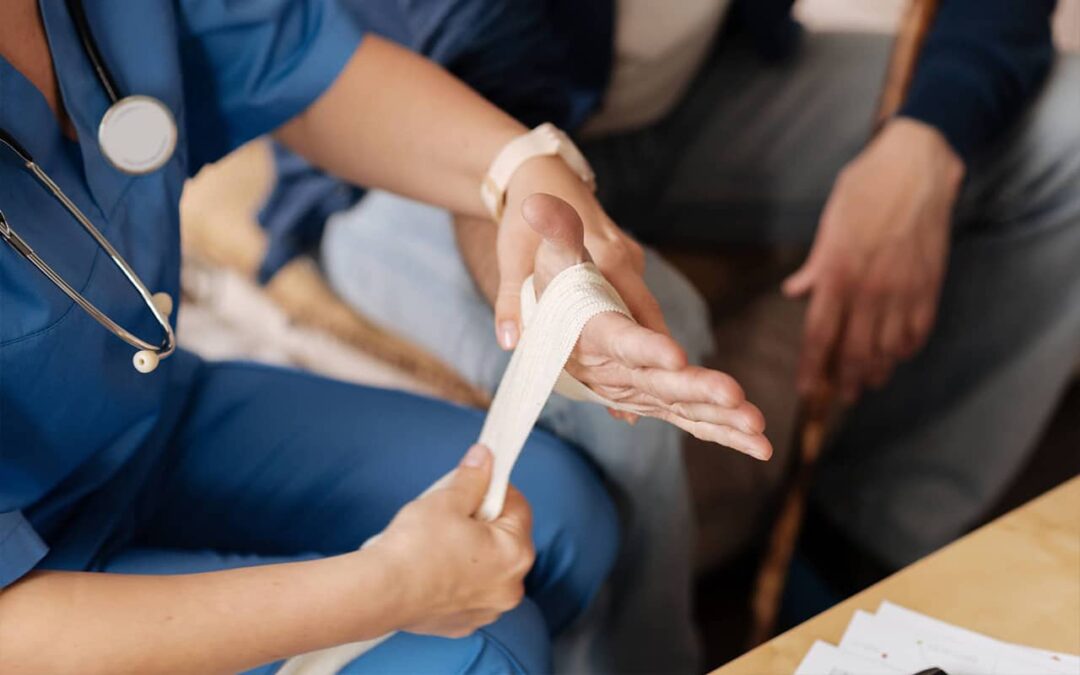Recovering after surgery can be a delicate journey. Every incision, every stitch, and every bandage plays a crucial role in ensuring a smooth healing process. However, not all patients have the luxury or convenience to travel back and forth to hospitals for wound checkups. That’s where in-home wound care comes in, a specialized medical service that delivers expert post-surgical care right at home.
This article explores the benefits of in-home wound care for post-surgical patients, how it works, and why it’s becoming a preferred option among healthcare providers and families alike.
What Is In-Home Wound Care?
In-home wound care refers to professional medical services provided to patients in the comfort of their own homes. These services are designed to monitor, clean, dress, and manage post-surgical wounds, ensuring they heal properly and safely.
A licensed nurse or wound care specialist typically visits the patient regularly to perform wound assessments, change dressings, and monitor for any signs of infection. They also educate patients and caregivers on how to maintain the wound between visits.
The goal is simple: to promote faster healing, prevent complications, and provide comfort without the stress of frequent hospital visits.
Why Post-Surgical Wound Care Is So Important
After surgery, the body undergoes a complex healing process. The wound becomes the primary focus of care because it’s vulnerable to infections, delayed healing, and other complications if not properly managed.
Post-surgical wound care ensures that:
- The wound remains clean and free from bacteria.
- Dressings are changed appropriately to promote healing.
- Early signs of infection are detected and treated promptly.
- The patient feels comfortable and confident during recovery.
Without proper care, even a minor wound can become a serious health risk. This is where in-home wound care makes a significant difference by offering consistent monitoring and professional support.
Key Benefits of In-Home Wound Care for Post-Surgical Patients

Let’s break down the most important advantages of receiving wound care at home after surgery.
1. Enhanced Comfort and Convenience
Healing in your own environment can make a huge difference. Patients feel more relaxed and less stressed when they are in familiar surroundings. Traveling to and from clinics can be painful, tiring, and sometimes risky, especially for those with mobility challenges or recent incisions.
In-home wound care eliminates the need for constant transportation, allowing patients to rest and recover peacefully. It provides comfort while ensuring professional medical care is never compromised.
2. Personalized and Consistent Care
Every patient heals differently. In-home wound care allows nurses to tailor treatment plans based on individual needs, surgical types, and recovery goals. Unlike hospital settings where care can feel rushed, home visits offer personalized attention and consistency.
The same nurse often visits regularly, building trust and understanding of the patient’s condition. This continuity ensures early detection of potential problems and timely interventions that promote faster recovery.
3. Reduced Risk of Infections
Hospitals and clinics, despite their hygiene protocols, can expose recovering patients to hospital-acquired infections. In-home wound care minimizes this risk by keeping patients away from potential contaminants.
At home, wounds are cleaned and dressed in a controlled environment, drastically reducing the chances of infection. The nurse also teaches proper hygiene practices to maintain a sterile area around the wound, ensuring safer healing.
4. Faster Healing Through Regular Monitoring
One of the major advantages of in-home care is the continuous monitoring of wound progress. Nurses can identify early warning signs of infection or delayed healing and take immediate action.
Regular assessments allow for timely adjustments in treatment, such as changing dressing materials or medications. This proactive approach leads to faster healing times and better overall outcomes.
5. Emotional and Psychological Support
Surgery can take a toll not only on the body but also on the mind. Many patients experience anxiety or depression during recovery. Having a compassionate nurse visit regularly provides emotional reassurance.
The personalized nature of home care helps patients feel supported and valued. This emotional connection can boost motivation, improve adherence to medical advice, and contribute to a more positive recovery experience.
6. Cost-Effective Alternative to Hospital Visits
In-home wound care is often more affordable compared to repeated hospital appointments. When you factor in transportation costs, hospital service fees, and time off work, home care becomes a financially sensible choice.
Insurance companies increasingly recognize the cost-efficiency of home-based medical services, making them more accessible for post-surgical patients.
7. Family Involvement and Education
Home wound care allows family members to be actively involved in the healing process. Nurses educate caregivers on how to assist with dressing changes, recognize signs of infection, and maintain a clean environment.
This not only empowers families but also ensures continuous care between professional visits. It transforms recovery into a team effort, fostering stronger support systems at home.
Who Can Benefit from In-Home Wound Care?
In-home wound care is ideal for various types of post-surgical patients, including:
- Those who underwent orthopedic surgeries (like joint replacements)
- Patients recovering from abdominal or cardiac surgeries
- Individuals with limited mobility or transportation issues
- Elderly patients requiring ongoing wound monitoring
- People with chronic conditions such as diabetes that slow wound healing
Each case is assessed individually to create a customized care plan that aligns with medical needs and recovery goals.
Common Procedures in In-Home Wound Care
In-home wound care isn’t just about dressing changes. It involves a range of specialized medical tasks designed to promote safe and efficient healing. Common procedures include:
- Wound assessment and documentation
Nurses evaluate the wound size, depth, color, and healing progress during each visit. - Cleaning and dressing
The wound is cleaned using sterile techniques and dressed with appropriate materials to keep it moist and protected. - Infection control
Professionals apply topical medications or antibiotics if infection is suspected. - Pain management
Caregivers monitor and help manage discomfort associated with the wound or dressing changes. - Education
Patients and families receive guidance on nutrition, hygiene, and warning signs that require immediate medical attention.
How to Choose the Right In-Home Wound Care Provider

Choosing the right provider is crucial to ensure quality and safety. When selecting a home wound care service, consider:
- Credentials and experience of the nurses or specialists.
- Reviews and referrals from doctors or past patients.
- Range of services offered, such as infection control and pain management.
- Availability and response time in case of emergencies.
- Transparency regarding costs and insurance coverage.
Selecting a reputable provider ensures peace of mind and high-quality medical care during recovery.
The Role of Technology in In-Home Wound Care
Modern healthcare integrates technology to enhance home-based services. Digital tools like wound imaging apps, remote monitoring systems, and telehealth consultations enable nurses and physicians to track healing progress in real time.
This tech-driven approach improves communication, speeds up decision-making, and ensures patients receive the best possible care without unnecessary clinic visits.
Preventing Complications Through Proactive Care
A proactive wound care approach helps prevent complications such as infections, dehiscence (wound reopening), and delayed healing. By having a professional regularly assess and manage the wound, potential issues are addressed early.
Patients also receive tailored advice on lifestyle, nutrition, and wound hygiene that supports long-term healing and reduces the risk of surgical site complications.
The Growing Demand for Home Healthcare Services
The shift toward home-based healthcare is growing rapidly worldwide. With aging populations and the rise of chronic conditions, patients are seeking more personalized and convenient care solutions.
In-home wound care perfectly aligns with this trend by combining medical expertise with comfort, accessibility, and patient-centered service.
A Smarter Path to Recovery
In-home wound care is transforming the post-surgical recovery experience. By bringing skilled medical professionals directly to the patient’s home, it ensures safety, convenience, and faster healing, all while reducing stress and costs.
For post-surgical patients looking for a smooth, comfortable, and efficient recovery, in-home wound care is not just an option, it’s the smarter path to healing. Reach to Healing Hearts Medical now for In-home health care services.
FAQs About In-Home Wound Care
1. How often do nurses visit for in-home wound care?
The frequency depends on the wound type and doctor’s recommendations. Typically, visits occur every few days until the wound shows significant healing progress.
2. Is in-home wound care covered by insurance?
Many insurance providers now cover in-home medical services, including wound care. It’s best to verify coverage details with your insurer beforehand.
3. Can family members assist with wound care?
Yes. Nurses often train family members to help with dressing changes, hygiene, and wound observation between visits.
4. What are the signs of wound infection to watch for?
Redness, swelling, pus, increased pain, or foul odor may indicate infection. Report these symptoms immediately to your healthcare provider.
5. Can in-home wound care speed up recovery?
Yes. Consistent monitoring, personalized care, and early intervention help wounds heal faster and reduce the risk of complications.

